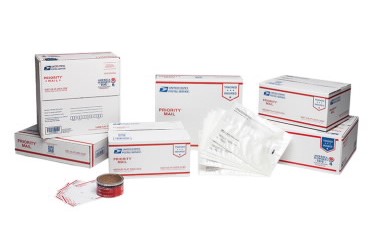Care packages are one of the easiest and most appreciated ways to show a loved one in the military that they are remembered by family and friends back home. Whether they are just beginning their career and completing their initial training or are about to be deployed for the umpteenth time there are appropriate ways to send care packages from home throughout their time in the military.
Boot Camp or Basic Training
The military provides everything from meals and housing to toothbrushes and socks to its newest recruits. Duplicates and extras are stored and only retrieved and returned to service members upon graduation. Unauthorized packages can even result in reprimand and punishment by their drill sergeant on their entire unit. So it is best to wait to send care packages until they are finished with this stage of their military career.
While care packages aren’t a great idea at this stage, letters from home are completely acceptable and encouraged. It is best to use plain paper and envelopes and resist the urge to decorate these items lest they draw unwanted attention to their recipient. It is acceptable to include photos from home with the letter but limit sending texts, photos and the like digitally. Often recruits have very limited access to email and cell phones during this time.
Post Boot Camp and Forward
Service members who have completed their initial training and those deployed away from home have far more freedom to receive care packages from home. Consider sending the music, toiletries, foods and treats the service member likes best. Those items along with notes, photos and small items are great ways to remind loved ones that they are remembered and missed.
Some great items to include in care packages include:
- Necessities: sunblock, lip balm, flip flops, socks and underwear, etc
- Snacks: Chips, salsa, nuts, cookies, beef jerky, non-melting candy and trail mix in packaging that isn’t easily crushed. Single serving packets of drink mixes are also a good addition.
- Homemade Baked Goods: Cookies and “cake in a jar” are two of the most popular items to include in a care package. The key to sending items such as these is sturdy packaging to prevent the items being crushed in transit.
- Fun items: decks of cards, special card games like Uno, crossword puzzles, stationary (helping ensure them sending letters home and to friends)
- Photos and notes: Photos of loved ones, pets or favorite places along with notes of encouragement and other uplifting messages are “favorites” in care packages among service members.
Items NOT to include:
- Alcohol
- Carbonated Beverages
- Drugs
- Cigarettes or Nicotine
- Explosives or Fireworks
- Flammable items, like lighter fluid
- Pornographic images
- Pork products (not allowed in Muslim countries)
- Lithium batteries
- Anything in aerosol cans (can explode)
- Chocolate (may melt)
Sending the Care Package

Military Care Kit, courtesy of the USPS
After carefully putting together an amazing care package it would be a huge disappointment for both the sender and the recipient to have it arrive in less than perfect condition. Here’s some pointers for keeping care packages in one piece as they make their way to their destination.
- Seal everything: Use zip lock bags when possible to keep items safe from the elements and/or from leaks. Take extra care to seal items that could leak and ruin the entire package before it arrives.
- Sturdy packaging: The best packaging is a free Military Care Kit from the U.S. Postal Service, which includes priority mail boxes, tape, custom forms and address labels. The packaging is free, but the postage is not. Keep in mind that local post office’s do not keep these in stock and employees may not even know the kit exists.
- Accurate shipping information: Include the service member’s unit, last and first name, title, DPO/FPO/APO and full ZIP code.
- Complete customs forms: Complete customs forms for any packages being shipping outside the United States. Customs forms are included with Military Care Kits or can be found on the USPS website.
- Shipping Times: Most care packages can reach their destinations within two to three weeks. During peak holiday shipping times allow five to six weeks for packages to reach their recipients. Keep up to date with guidelines and deadlines for holiday shipping here.

2020 Shipping Deadlines for Delivery by Dec 25, courtesy of the USPS
- Keep in mind: Check the post office’s prohibited items list to keep items from being rejected. Remember that sometimes packages from home are opened or screened by someone before reaching the intended recipient, so don’t send anything strangers shouldn’t see. Carefully consider sending things that are valuable or can’t be replaced – sometimes packages get lost and even carefully packed items may be damaged in transit.
Decorating Care Packages
Many choose to decorate their care packages with wrapping paper, stickers, cartoons and printouts of photos. There is no wrong or right way to decorate a care package. Keep in mind, decorate the INSIDE of the box or wrap the items inside individually. The outside of the box should be “standard issue” and easy for USPS and others to read the name and address of the recipient.
Adopting a Service Member
As the holiday season approaches, consider “adopting” a service member and sending a care package to them. This is also an opportunity to thank a service member as a project for scouts and other youth service organizations. Websites like Any Soldier provide the name and mailing address of service members who sign up with them and would love to receive letters or care packages from anyone.
This article originates from militaryconnection.com not HelpVet. View original article here.

